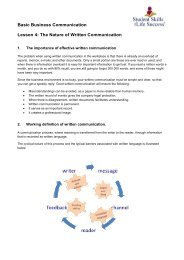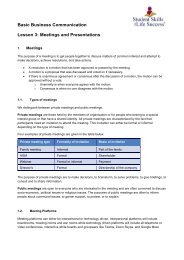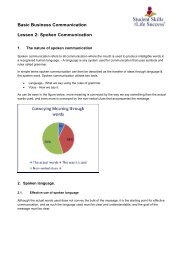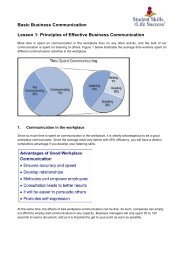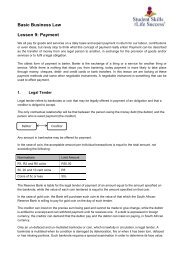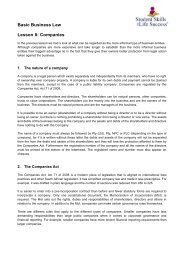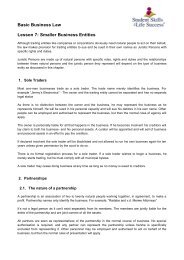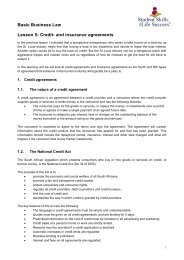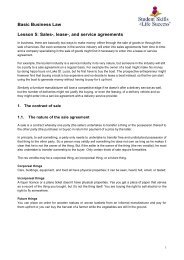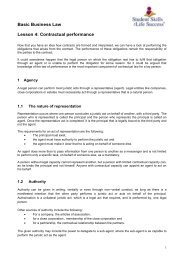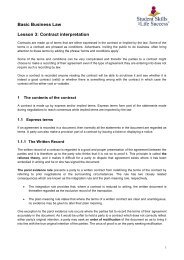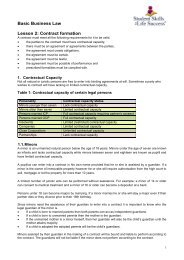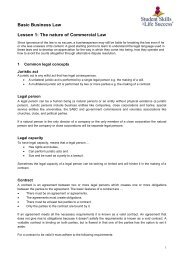Purchasing and Financing 2024
Purchasing- and Financial Management For 2nd year CATS learners. Aligned to the outcomes of the German accredited certification: “Industrie Kaufmann/frau”.
Purchasing- and Financial Management
For 2nd year CATS learners.
Aligned to the outcomes of the German accredited certification: “Industrie Kaufmann/frau”.
You also want an ePaper? Increase the reach of your titles
YUMPU automatically turns print PDFs into web optimized ePapers that Google loves.
For example, companies in cyclical industries may require higher ratios to remain solvent<br />
during downturns.<br />
3. Working Capital = Current Assets - Current Liabilities<br />
The Accounting Equation can be rearranged to determine the net worth of the business,<br />
or the amount of assets that belong to the owner debt-free. Similarly, the Working Capital<br />
takes the difference between current assets <strong>and</strong> current liabilities to measure the<br />
immediate liquidity of the business.<br />
It is mainly used to check current assets that can be converted to cash against current<br />
debts that may be coming due. It provides a comfort level of available resources to pay<br />
current liabilities. A negative result indicates a company may have trouble paying debts<br />
<strong>and</strong> may be at risk of bankruptcy.<br />
It is more relevant when compared with previous quarters or years. Declining figures may<br />
indicate a decline in sales, <strong>and</strong> thus a decline in Cash or Accounts Receivable. However, an<br />
increase in the number may indicate operating inefficiency. Increasing Cash Balances may<br />
indicate the company has not utilized cash effectively for growth.<br />
Long Term Financial Condition <strong>and</strong> Liquidity<br />
1. Book Value<br />
Book Value is one of the simplest <strong>and</strong> one of the most important measurements of a<br />
company's financial condition. It equals Owner's Equity, or the company's assets minus its<br />
liabilities as listed on the Balance Sheet.<br />
Assets - Liabilities = Owner's Equity<br />
Net Income increases the value of the business, or Owner's Equity, by increasing Retained<br />
Earnings. Although investors often buy <strong>and</strong> sell on short-term information, it is ultimately<br />
the growing value of the company that determines the successes <strong>and</strong> failures of<br />
management <strong>and</strong> the real return on investment.<br />
In publicly traded companies, Book Value is measured as:<br />
Shareholders Equity/Shares of Stock Outst<strong>and</strong>ing<br />
Book Value is what the company is worth if it were liquidated today. For publicly traded<br />
companies, it is compared to the company's Market Capitalization, or market value of all<br />
the company's stock outst<strong>and</strong>ing.<br />
When the share price of a company's stock is low in comparison to the Book Value per<br />
Share, the stock is considered a bargain. Conversely, if the share price is high in relation to<br />
the company Book Value, the stock is considered expensive <strong>and</strong> possibly overpriced.<br />
44




